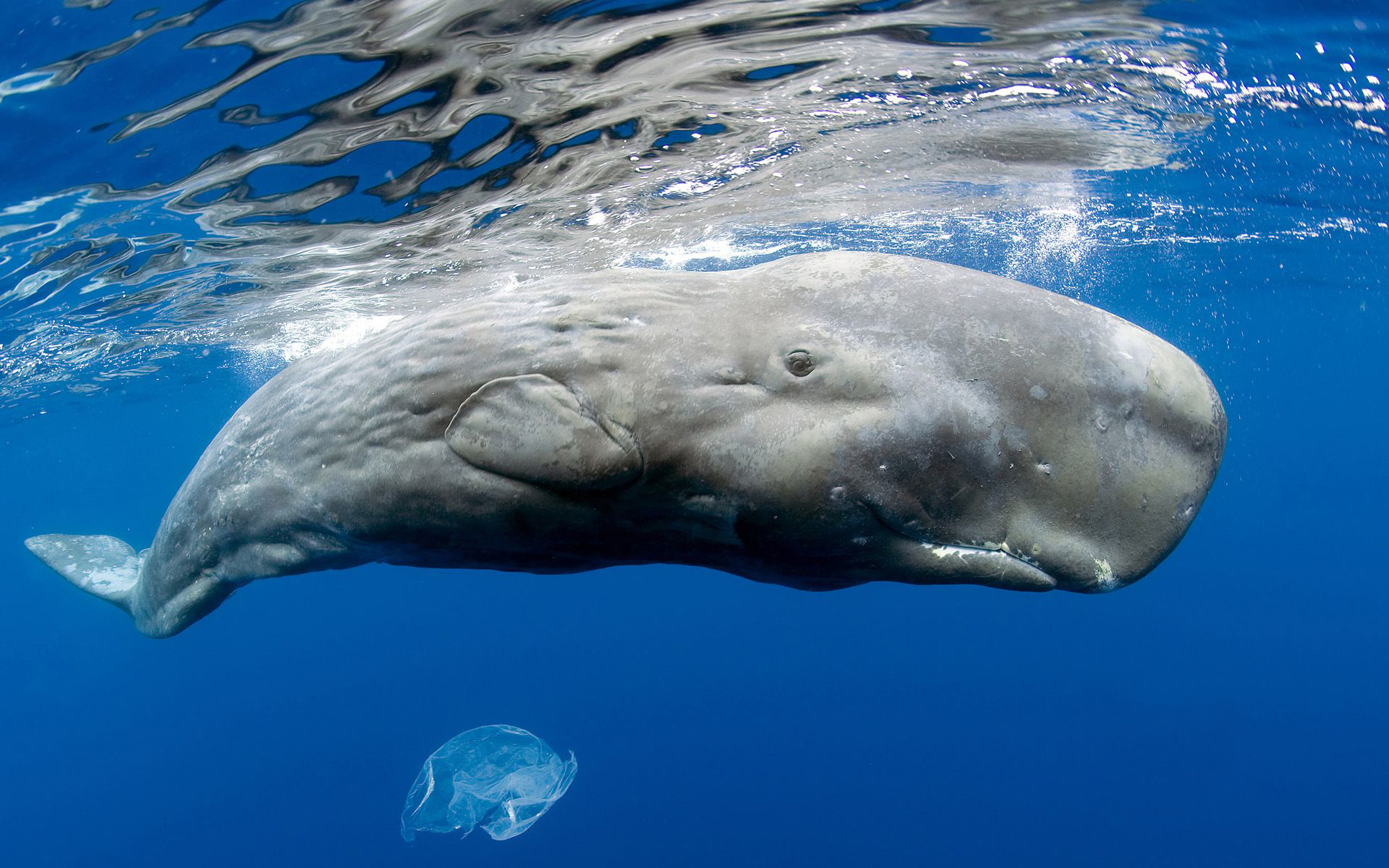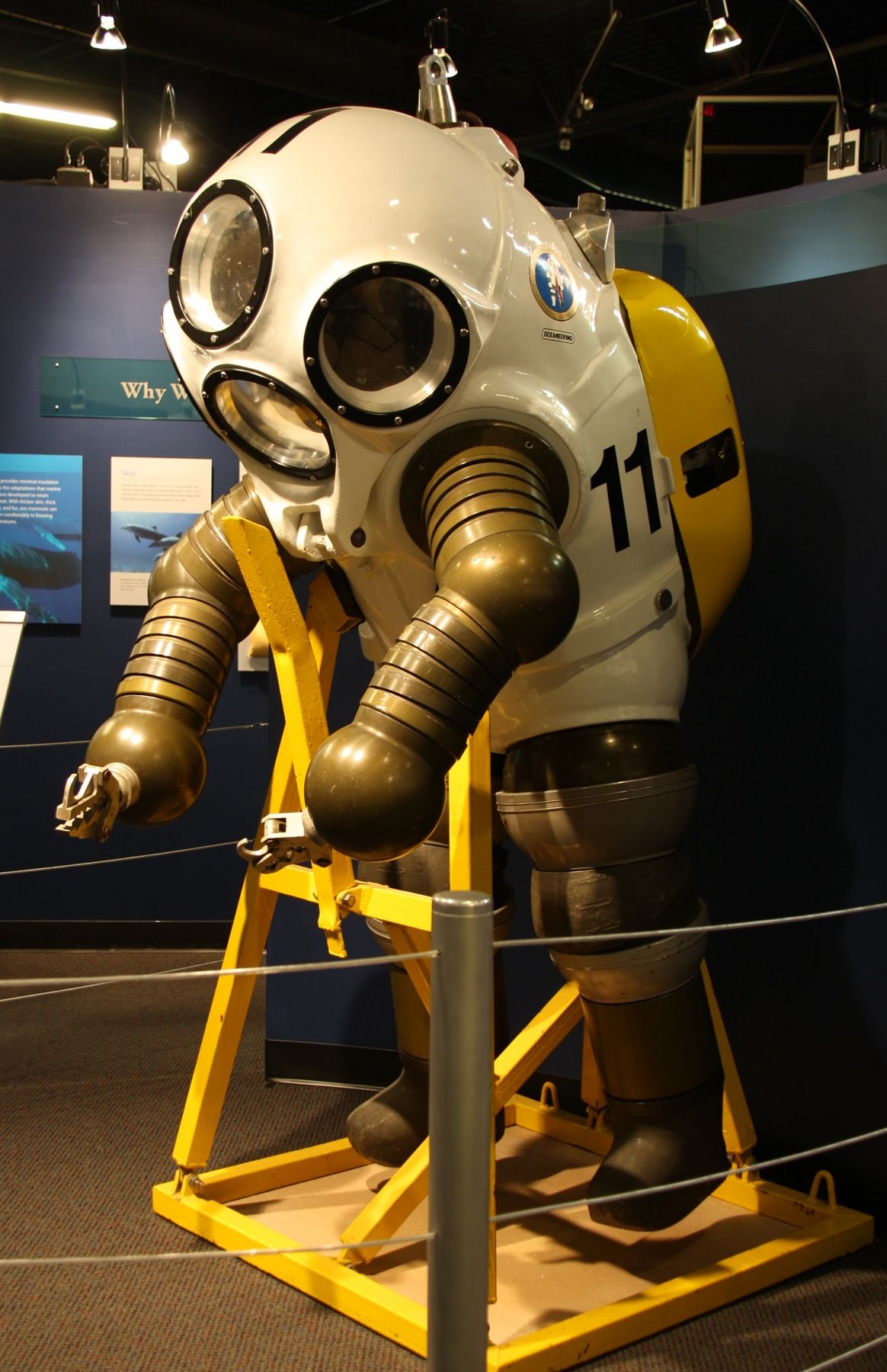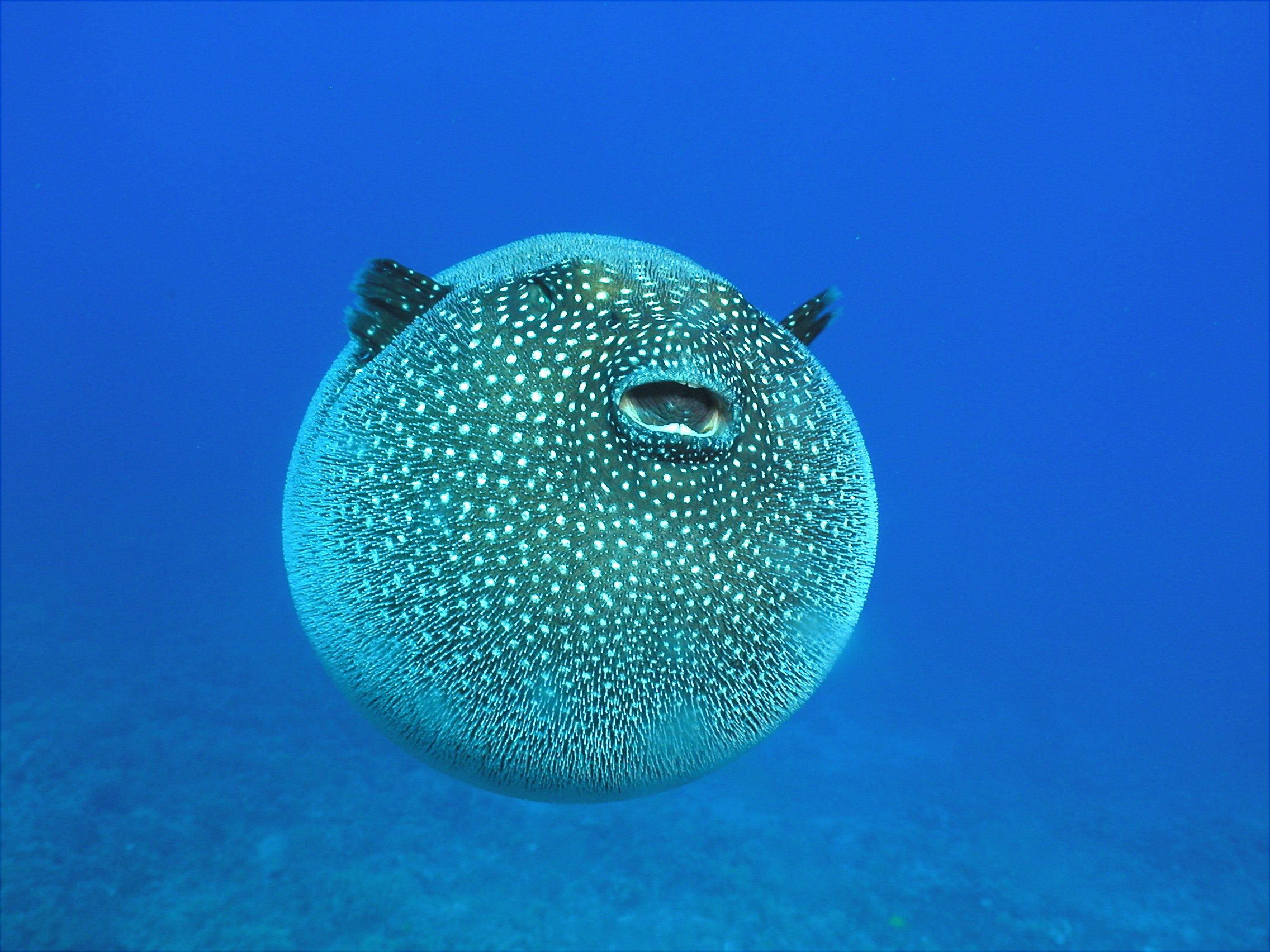
| Main | Neocene |

The world of flying whales and forests soaring above the thunderclouds. The world with a superdense atmosphere and enormous pressure. What if the Earth would be similar to Venus?
Text by Igor Kraj
(article is published here in authorial version with pictures sent and approved
by author himself; the magazine version may be seen here)
“But it means a mind reading.”
“Let’s assume it. What of it, if we
are not limited by anything in our
creativity?” - king had countered.
Stanislav Lem “Repeating”.
What would happen, if the climate
on the Earth would be different? But, you see, it is not uniform all the
same. There are both fuggy rainforest and icy deserts. In far geological
past there were both global congelations incomparably surpassing ice ages
of human era in their scale, and warming, when tropical forests reached
almost to polar regions. |

How real is it?The main difficulty is nitrogen. Other gases cannot become
a basis of an oxygen atmosphere, because they are either insufficiently
distributed, or are too light for the Earth-like planet to keep them,
or are poisonous or inflammable.
Ammonia is quite naturally present abundantly at the mysterious Titan of. If to extrapolate the “experience” of Titan to the Earth-sized world, we shall receive exactly a nitric atmosphere 100 times surpassing Earth one in weight. The another problem is that as a “tie-in” with the increased stocks of ammonia the planet formed at the distance from its star will inevitably receive an amount of water enough to cover it with a layer of one hundred kilometers thick. |
Actually, any variations of average temperature
at the planet will result only in change of the relative area of tundra and
jungle. Changing the humidity, we shall get a continuous desert, essentially
not differing from Namib and Atacama deserts, or the boundless sea. But also
the present Pacific Ocean is great enough, perhaps, to satisfy the most inveterate
gigantomaniac.
Of course, if we’ll do it right, in a big way, making, for example, the amount
of heat received by our planet, 10-100 times greater or lesser, we shall not
find a place for habitual conditions any more. The world will turn to a similarity
of Mercury melted off by Sun heat, or will become covered with a crust of frozen
gases. But we have Mercury or Pluto initially, not straining our imagination.

Planets get their primordial atmosphere at the stage of their
formation. Later it releases light gases (due to their “escape” to the space)
and
replenishes with volcanic releases.
The natural border of climatic deviations
worth to talk about is the ability of human survival without the help
of high technologies. Because with their help it is possible to adapt
to everything, not changing way of life – even to the absence of a climate
as such. Even nowadays the building of orbital cities or colonization
of the Moon is only a matter of expenses and expediency. Only the human
body is limited in its opportunities. The intelligence enables to develop
gas oceans of the Jove, ice splinters at the borders of Solar system,
and even space emptiness. But these would be not human worlds. People
would get there only tiny man-made islets. |
Only the air pressure is not limited with confined frameworks. The atmosphere cannot be made too rarefied. Even twice less dense, it will not be suitable for human being anymore. But it is possible to “thicken” it fairly.
OxygenIt is not difficult to sate a superdense atmosphere with
oxygen. It is so, because not its relative contents, but only absolute
amount of the life-giving gas getting to the lungs is important. Because
of it the deeper the skin-diver dives, the lesser is the contents of the
oxygen in its respiratory mix. Otherwise nitrogen narcosis would be also
supplemented with oxygen one. And everyone knows how harmful is to mix
alcohol drinks.
|
So. What pressure the human being can withstand?
Depth of diving with an aqualung is limited by danger of nitrogen narcosis caused
by nitrogen dissolving in blood. In itself this gas used for a narcosis is harmless,
but, having started to talk to fishes, the diver risks to lose mouth-piece.
The problem is solved by using of a special helium-based respiratory mix enabling
the human to reach the depth of 300 meters. Only at the pressure of over 30
atmospheres “helium barrier” comes out, being also connected with disorders
of mentality and motoric functions.
But as far as at the end of 1960-th it was established that in conditions of
consecutive change of several respiratory mixes helium barrier is quite surmountable.
Volunteers have begun to feel discomfort only at the pressure of... 240 atmospheres!
This is an equivalent to diving to almost two kilometer depth. That is, people
appeared capable to endure the same conditions as a sperm whale.
Maximal depth achieved at diving with an aqualung is 330 meters. But the emersion after that alone takes almost nine hours. |

As it is considered, sperm whale dives to the depths from 2200
up to (maybe) 3000 meters, hunting giant squids. But what can squids eat at
such depth is still a puzzle – maybe, the sperm whales overestimated their forces.

Despite of the opportunities given by heliox, the most practical
equipment
for works at the depths from 120 up to 600 meters is an atmospheric
diving suit, inside which the pressure is kept equal to atmospheric.
Comparison to sperm whale is, however,
not quite right, because the whale does not breathe under water. Its lungs
are rather small relatively to the body size and contain small amount
of air. Before the diving the sea giant stocks oxygen right in its blood.
Because of it the diffusion of nitrogen into the tissues, and then nitrogen
narcosis and the decompression are not dangerous for cetaceans. |
Despite of stunning result, the secret researches
in the field of adaptation to high pressures had been stopped as having no any
practical prospect. After all, one of conditions of safety of superdeep diving
is the limitation of its speed, which could not exceed 10 meters per hour. In
addition, one should emerge much slower. Without it the organism had not time
to accustom to changes and the composition of gases dissolved in blood – to
change completely. But it is impossible even to sustain 30 hours necessary for
diving to cherished 300 meter depth in diving suit.
Practically for real “pedestrian” descent to the ocean chasm it would be required
to create a chain of tens of diving bells placed deeper and deeper, in which
divers could have a rest. Militarians could not imagine a situation in which
similar rates would be allowable, and expenses are justified.
But the question on speed of diving loses its urgency in cases when it is not
necessary to emerge. That is, if the Earth atmosphere in equal to Venus one
in density, it would not threaten to live creatures in itself. Quite probably
(at least, within the framework of fantastic assumptions) people would not have
a trouble even with nitrogen narcosis. Sensitivity to the poisoning with this
nitrogen is individual. Probably, it is possible to accustom to it.

Boundless cloudy fields so are fine, that deserve to be inhabited.
Temperature
The rise of temperature can cool a little the enthusiasm
raised by fascinating prospects of the air world. On the Earth at such
density of an atmosphere it should rise up to 250 degrees Celsius. But
oceans will not begin to boil, by the way. Pressure of 100 atmospheres
will keep water in liquid phase even at 300 degrees Celsius. |
Air 100 times denser would make the Earth completely
different world. In such conditions balloon able to lift a human, filled with
hydrogen, would be only one meter in diameter. And it means that “live balloons”
described, for example, in Kir Bulychev’s “The Settlement”, would get a full
approval from physicians and biologists. Soaring would become the most obvious
and effective way of movement quite accessible even for creatures with firm
armour, so evolution would not ignore such opportunity. Soaring cavities in
bodies of animals would become as usual, as swimming bubbles in fishes.
But the first group to take an advantage of aeronautics would be plants. If
the hollow stalk filled with light gas weighs of nothing, hence its height is
practically unlimited. Tree can extend upwards for hundreds meters, and even
for kilometers – to uplift its crone higher above clouds. Because the dense
atmosphere passes light necessary for photosynthesis too reluctantly.
In any case, even at moderate height, trees will appear unlike terrestrial ones.
Similarly to macroalgae they will be kept in vertical position due to lift-up
of gas bubbles instead of trunk rigidity. Soaring branches would be connected
to root system by strong and flexible cord having minimal sailing capacity and
capable to resist to hurricane.
Dragon wings, being useless in our world, become quite functional in dense atmosphere. |
Wind in “Venus-like” atmosphere is
a quite special matter. Conditions for occurrence of storms must be absent,
because the temperature is almost identical everywhere. But even the slightest
whiff is capable to get a human airborne and to carry him away to the
other end of the world. Fortunately, troubles also will be limited only
to it, because the speed of flight will be low and landing – rather soft. |
If it is hard to keep against the ground, would it be easier
to leave it forever? It is possible to take water right from air, like some
orchids do, having stretched a net of roots. Of course, necessary mineral substances
plant will have to extract from rainwater and dust. Nevertheless, Earth lichens
quite manage these sources.
It is possible to imagine greenish clouds of unicellular plants soaring in the
element, but not due to droplets of fat, as in the sea, but due to bubbles of
hydrogen or methane. Or simply gliding, like our young spiders do using their
spider web threads. Or integral soaring islands – enormous carpets of bound
hollow stalks and leaves laid downwind. The planet will get similarity to the
world of “Avatar” movie full of surrealistic giants and winged creatures.
Even Earth-dwelling habitual “stationary”
plants are capable to react to changes of weather and time of day. Airborne
forests will have to develop the mechanism of controlling of height and
speed of soaring. When thunder-storm comes closer, tree filled with hydrogen
needs to rise above clouds. |

Blowfish (only filled not with water, but with hydrogen) can
be considered as a real prototype of a live aerostat.
At the pressure of 100 atmospheres it would fly up, but would not direct its
movement with the help of so small
fins. Planes should have an increased area..
Plants would look strange in conditions of superdense atmosphere, but animal will change even more. Streamline fish-like creature having 90% of its body volume occupied with gas cavities would appear an optimum “decision” for conditions of dense atmosphere. Fins can be more useful as rudders, and jet “engine”, like squid has, is more preferable. Also very wide flat tail may become the body of movement. The size will change from big up to enormous, because at swimming in air, as well as at swimming in the sea, only accessible food resources will limit the animal’s weight. But the main thing is that giantism improves the weight to body surface ratio. Larger is the creature, easier it can afford, for example, the replacement of soft covers by firm calcareous shell impenetrable for gas and inaccessible for enemies. At last, the soaring whale looks ten times larger than sea-going one simply because it is inflatable.

Feather-like outgrowths on bodies of copepod crustaceans enable
them “soaring” in water like the poplar seed tufts.
It is a very perspective principle of movement in conditions of dense atmosphere.
In conditions intermediate between
water and air it is necessary to expect also of the appearing of the creatures
combining features of mammals, fishes and birds. Everything will be possible
here: compact little pink elephants moving due to ear-flapping, dogs of
unhealthy color levitating due to using of smoke like Montgolfier brothers,
talking fishes, batmen, griffins, dragons, chimeras, politics believing
their official credo... Nitrogen is a powerful thing anyway. |
Of course, pressure will fall with height.
Twenty five kilometers high from the surface it will make already only ten atmospheres.
Here already winds may blow, even rather strong, but the creature carried away
in air mass will not feel them, and also will not risk at all colliding against
any obstacle. This area is good for plants. It is lesser amount of water and
dust, but it is more light here. If below the temperature is terrible +250°C,
at this height it appears quite comfortable. Otherwise, it will be cold, but
the dark covers heated up by sun rays will correct the situation.
The main thing is, the higher up, the lesser is a number of herbivores. The
creature weighting one kilogram only should represent a bubble like two footballs
in diameter. Cavities will occupy already 99% of its volume. Such structure
is acceptable for a plant, but hardly for active and complex creature. Only
“live gliders” with impressive gliding planes and arthropods on webs can glide
up to twenty and even to sixty kilometers. But nothing will, however, prevent
them both to have a rest and even to settle in soaring trees.

In the world where the atmosphere is so dense, that Archimedes
is always ready to offer a helping hand to designers,
technical progress will follow the ways lovely to heart of steampunk fans.
What can people do in such extreme world? If
at the bottom, on contrary to predictions of planetologists, usual land and
seas are, the way of life will not differ radically from Earth one. When the
immunity to diffusion of nitrogen into the blood will develop, only constant
gloom and the increased resistance of air to movements will be a reminder of
uncommonness of conditions. Among strange waving forests, huge stalks lost in
clouds and carried away into foggy height by chains of gas bubbles, the usual
civilization will appear. But it will differ, however, with the prevail of air
transport irrespectively of the level of technological development. Because
even at the surface the majority of animals fly, it wouldn’t be a great problem
to tame them.
It will be easy also to build “individual flying devices” looking like a balloon
equal to large backpack in size with a pair of small wings. However, for performing
of high-grade gliding strong umbrella-sized plane capable to endure human weight
appears enough. Something like a board will be suitable.
Using balloons and “flying umbrellas” it is possible to rise up, above the clouds,
where it is lighter, where armoured whales and mile-long worms made of hundreds
of iridescent spheres soar. Nothing prevents also to occupy soaring atolls.
It is possible to gather food there. But some deep-rooted human habits need
to be reconsidered. For example, it is rather dangerous to make open fire on
the heaven islands filled with combustible gases. But there is always an opportunity
to fuel the burners with the gas, which renewable stocks are literally right
underfoot.
What about the life in constant fear of height? What fear we are talking about,
if falling in so dense environment is slow as if in dream?.. That is, if to
be more exact, its speed corresponds the descent using an army parachute. Only
in the case when the superheated “pressure cooker”, or planetary ocean hundreds
kilometers deep is below, falling without any object which can be used for planning,
will mean inevitable death.
The “above-the-clouds” existence will create a set of the problems. Of course,
it is impossible to find metal in air. But who knows how will look and for what
purpose bones and shells of airborne creatures may be useful? Anyway, diverse,
strong and easy covers of live aerostats will almost certainly make tailors
happy. Enormous predators and tiny pests striving to gnaw through covers of
soaring island will also not dive time to be bored – as well as the dying off
branches capable to drag it down into veil of clouds threaded with lightning
discharges, to black mountain peaks or to the ocean surface burning like magma.
* * *
People say, scuba diving satisfies the eternal human dream of free flight. But water is always an element alien to humans. The “fifth ocean” – an atmosphere which can fill our lungs – is another matter. Maybe, it is not so dense to float in it, but it enables soaring on tiny folding wings as long as you like… Walking on elastic trunks of soaring trees... Watching clouds floating by below from the backs of air whales decorated with corneous crests... Would the somewhat high air pressure be an expensive payment for it?
Further reading
Richard M. Goody, James C. G. Walker “Atmospheres”
John Imbrie, Katherine Palmer Imbrie “Ice Ages. Solving the Mystery”
Konstantin Kondrat’ev “Meteorology of the planets” (in Russian)
Stanislav Lem “Astronauts”
Stanislav Lem “Repeating”
Stanislav Lem “Fiasco”
Mikhail Ma’arov “Planets of Solar system” (in Russian)
Georgy Voitkevich “Chemical Evolution of Solar System” (in Russian)
Felix Ziegel “Travel in bowels of planets” (in Russian)